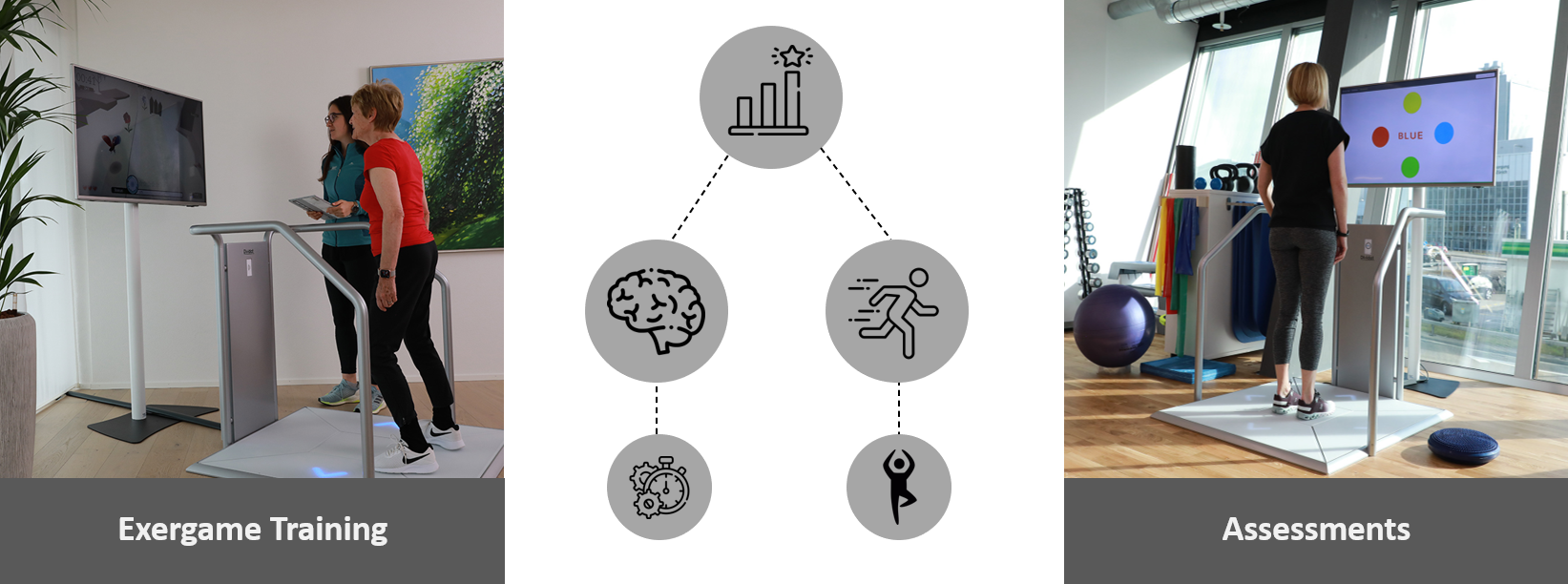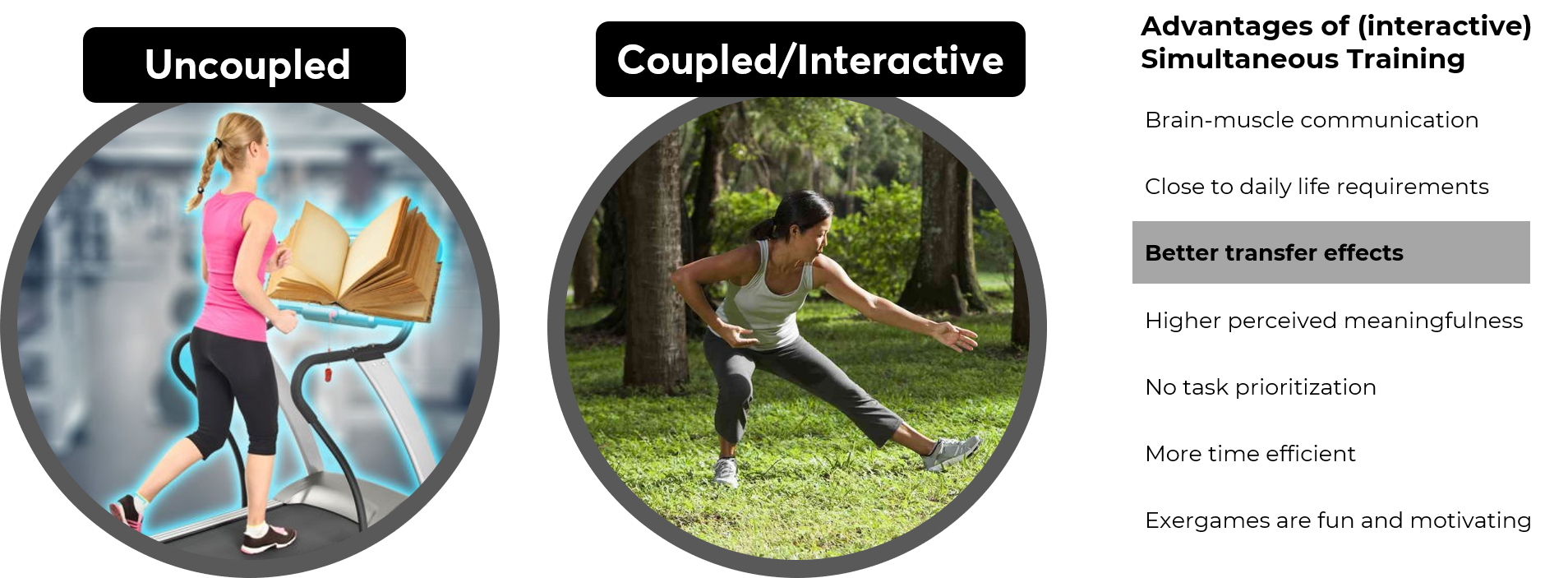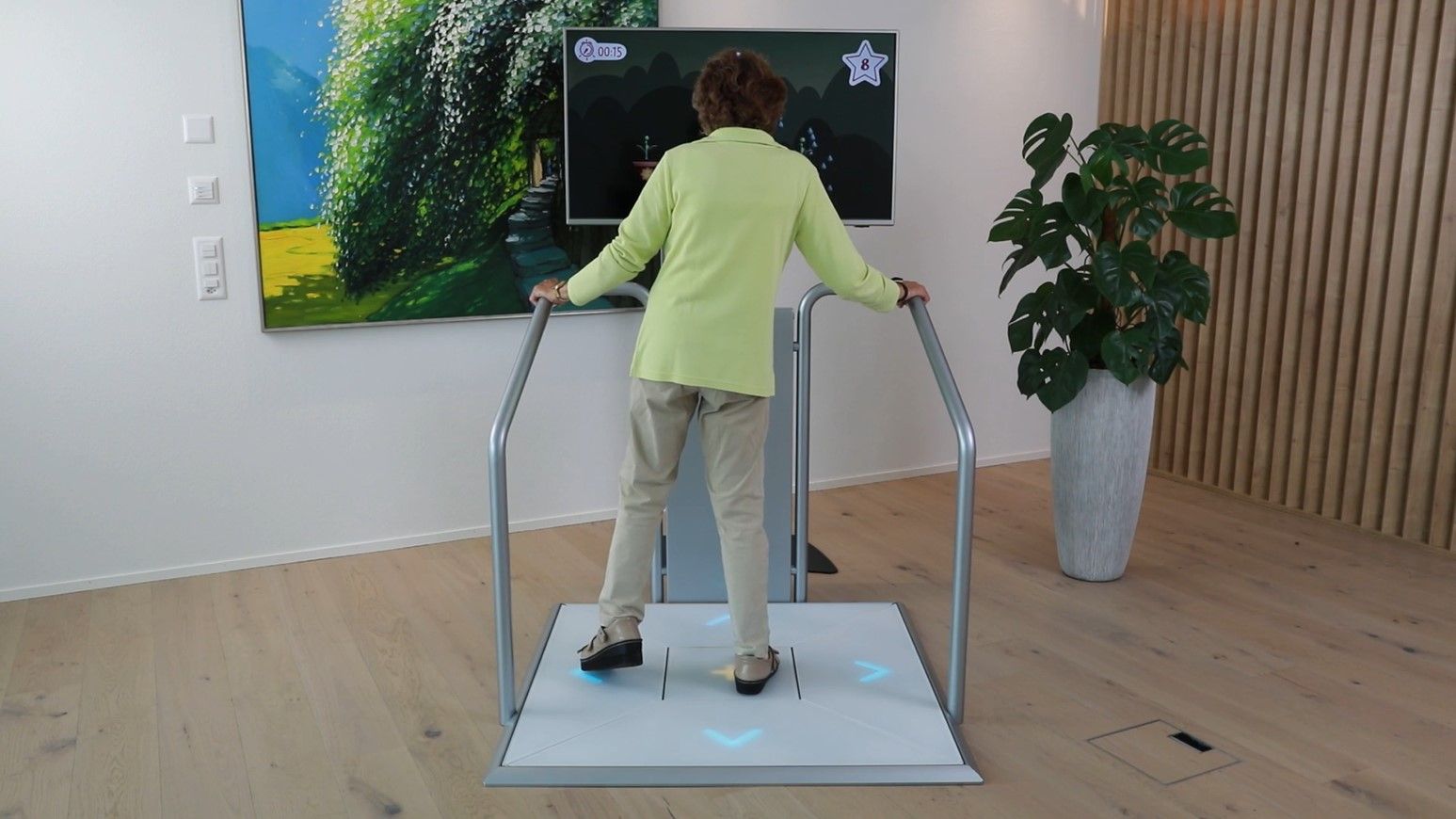news
Transfer Effects
As we continue to dive into topics that are fundamental to your daily life, your health and wellbeing we would like to now dive into the science behind training and transfer effects.
When discussing training and transfer effects it is important to understand that consistent training leads to improvements in trained tasks. As an example, in the case of exergame training, game scores might be improved. Of course, it is not surprising that repetition helps you get better at what you are doing. But the idea behind most training approaches is to train some targeted and underlying function, for example, a cognitive or physical function. So, in the case of exergame training, in addition to wanting to improve your game score you might also want to improve reaction time or dynamic balance. Thus, we strongly recommend using tasks other than training tasks to evaluate training effects. For example, since assessments can be applied before and after a training period, we do not recommend using training tasks themselves to assess training effects.

However, there are many other tasks besides assessments which rely on the trained function. Theoretically, every task based on the trained function should also get better when the underlying function is improving, right? This is the basic idea of training certain skills which should then transfer to another non-trained task - ideally to daily life tasks and activities, even though you might not be able to measure them explicitly.

With that said, the transfer effect refers to the ability that individuals can use their knowledge and skills learned in one scenario, like training, to achieve different goals in another scenario, like daily life activities. Especially with combined cognitive-motor training, we are very close to daily life requirements where ongoing physical-cognitive interplay is used for most daily life tasks; the transfer effects are more likely if the training task is close to the task and activity, where we also hope to see an improvement (i.e. daily life). Thus, the transfer effects are much more likely, which is one of the advantages of a simultaneously combined training approach.

If you are interested in hearing more about combined-training, check out this previous post where we discuss how combining physical and cognitive stimulation has the best effects on brain health and functioning.
